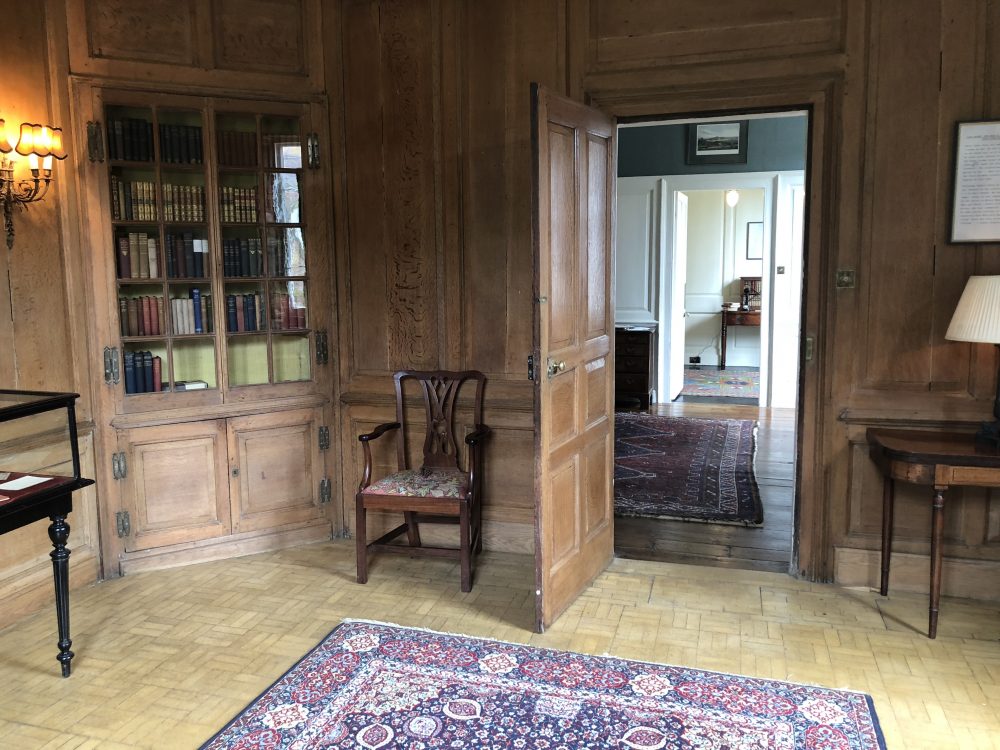Lamb House is open to visitors again following its recent makeover. Without fanfare, it is a ‘soft opening’ allowing an interactive period with visitors and the local community.
Under the guidance of its curator, Jerzy Kierkuc-Bielinski, (formerly at the Sloane Museum in London) the house has been transformed from three bijou rooms, back into a gentleman’s residence as it was in the days of Henry James who bought it in 1901 and lived there till his death in 1916. It remained in the James family till 1950, when it was bequeathed to the National Trust by Dorothy James, having been occupied meantime by some famous writers, EF Benson of course and also Rumer Godden.

It has taken more than a year to renew tired features, to redecorate, and to open up new areas for the public, and the process is not finished says Daniel Demaine, the House Steward, recently recruited from the Jerwood Gallery in Hastings. The initial phase has been to “declutter and refresh” with a deliberate thinning out of furniture and objects to recreate a lived-in space, as though the master of the house would be returning at any moment.
As first impression, the entrance hall is now a space for quietly assimilating the atmosphere of the house, an effect achieved by relocating the formerly intrusive ticket and membership office to the annex next door.
The telephone room to the right of the hall gives the idea. It is easy to imagine Henry James using the first installed telephone in Rye, calling his friend Rudyard Kipling over at Bateman’s, Burwash and inviting him to lunch. Kipling arrived one day in his brand new motor car (a Rolls Royce) but towed by a quadruped because it had broken down en route, if the anecdote is to be believed. Pick up the old-fashioned receiver and you can listen to excerpts of either author’s writings.
The oak parlour, where James would have received his guests is simply furnished, as is the dining room, both with views of the lovely garden. On the dining table are books by both James and Benson, which the visitor is encouraged to peruse at leisure, perhaps sitting in the garden on a summer’s day.
Upstairs is the winter writing room with stunning views of the hill towards Udimore, then not lined with housing. James’ original writing desk, as with other furniture, has been placed back where originally located. The Remington typewriter is of the same model that James would have used.
Next, we came to the King’s bedroom, named after George I, who arrived after near shipwreck on Camber Sands (according to popular legend). A portrait of Thomas Lamb’s son, George Lamb, christened with the King as his godfather, hangs opposite the inviting four-poster bed.
Then we toured the garden, admiring the beauty of the rose-garden, and the neat beds for growing flowers and vegetables for the house. The two gardeners come twice a week and are assisted by volunteers. The mulberry tree dominating the lawn has been heavily pruned, but is putting out new shoots. In the west wall, a bricked-up archway has been revealed – not the one leading to the secret garden, now part of 7 Mermaid Street, but another access formerly to a chapel, of which no record perhaps now remains.
Completing the circuit, we approached the courtyard set with tables and chairs and the small cafe within, with its freshly baked National Trust cakes. It was here last Friday June 1 that the Mayor Cllr Michael Boyd took breakfast with other invited guests to mark the first reopening of the house. Already since then there have been 350 visitors in the first three days, welcomed by the dedicated team of staff and local volunteers.
Daniel Demaine spelt out the philosophy of this new National Trust venture. Everything fits into an evolutionary plan, from recapturing the past to engaging and being relevant to the present. This is a three-year project with the next phase being to open other rooms on the first and second floors, not currently open to the public. There could be exhibition rooms or perhaps space made available for an artist in residence or other creative facility.
There is a process apparent here of gathering information, of interacting with the community, and letting the plan evolve over time. The Edwardian era had its new-fangled inventions, but it could also project an unhurried pace of life, such as one can experience today through visiting or indeed revisiting Lamb House in West Street.
Photos: National Trust/Jennifer Hatton
Image Credits: Jennifer Hatton, National Trust .



